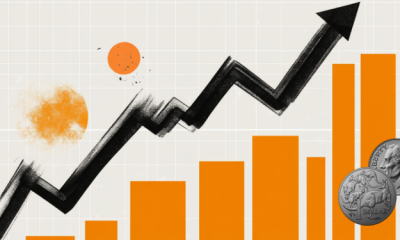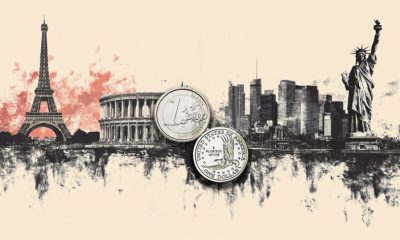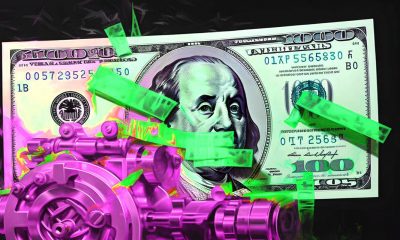

others
European Central Bank lowers key rates by 25 bps in January as expected – Crypto News
The European Central Bank (ECB) announced on Thursday that it lowered key rates by 25 basis points (bps) following the January policy meeting, as expected. With this decision, the interest rate on the main refinancing operations, the interest rates on the marginal lending facility and the deposit facility stood at 2.9%, 3.15% and 2.75%, respectively.
Developing story, please refresh the page for updates.
Please follow our Live Coverage here
This section below was published as a preview of the European Central Bank’s policy announcements at 08:00 GMT.
- The European Central Bank is set to lower key rates by 25 bps at the January policy meeting.
- ECB President Christine Lagarde’s words will hold the key to offering fresh policy cues.
- ECB policy announcements are expected to rock the EUR/USD pair and infuse intense volatility.
The European Central Bank (ECB) interest rate decision will be announced on Thursday at 13:15 GMT following the conclusion of the January monetary policy meeting. Markets are anticipating another reduction in key rates, marking a continuation of the easing cycle after December’s rate cut. No updated staff economic projections will published at this meeting.
ECB President Christine Lagarde will hold a press conference at 13:45 GMT, where she will deliver the prepared statement on monetary policy and respond to media questions. The ECB announcements will likely inject intense volatility around the Euro (EUR) against the US Dollar (USD).
What to expect from the European Central Bank interest rate decision?
After lowering key rates in December, the ECB is widely expected to announce another 25 basis points (bps) cut, taking the benchmark rate on deposit facility from 3% to 2.75%. It would be the fourth straight interest rates cut after trimming them in September, October and December 2024.
In December’s post-policy meeting press conference, ECB President Christine Lagarde said that “risks to growth are tilted to the downside,” while the “risk to inflation is now two-sided.”
Speaking on the inflation and interest rate outlook in a CNBC interview last week, on the sidelines of the World Economic Forum (WEF) annual meetings in Davos, President Lagarde said: “We’re confident Eurozone inflation will be at target over the course of 2025,” adding that “gradual moves in rates come to mind at the moment.”
Eurostat’s preliminary data released on January 7 showed that the Eurozone Harmonized Index of Consumer Prices (HICP) rose 2.4% year-over-year (YoY) in December after reporting a 2.2% increase in November. The data aligned with the market forecast. The annual core HICP inflation held steady at 2.7% in the same period.
Eurozone inflation remained elevated and moved slightly from the central bank’s 2.0% target in December. Economists at ABN Amro noted that “the rebound in headline inflation was driven largely by energy, with both the lower base from last year but also recent weakness in the Euro contributing to higher petrol prices, as well as higher gas and electricity prices with Europe running down its gas inventories somewhat faster than usual this winter. “
Subsequently, the accounts of the December ECB meeting published on January 16 showed: “There were still many upside and downside risks to the inflation outlook. More check points had to be passed to ascertain whether disinflation remained on track and kept open the optionality to make adjustments along the way.”
Against this backdrop, the ECB’s communication in the policy statement and President Lagarde’s comments will hold the key to determining the scope and timing of the next rate cuts as the Bank battles concerns over economic growth and potential tariffs by United States (US) President Donald Trump’s administration.
Previewing the ECB meeting, TD Securities analysts said: “This decision should be a fairly straightforward cut. Inflation data has been noisy but on net a touch weaker than expected in its December projections. Growth signs show no real signs of improving, either, adding to the soft backdrop.“ “We expect no real change in messaging around this one, but questions about the neutral rate are likely to crop up in the press conference,” the analysts added.
How could the ECB meeting impact EUR/USD?
In the lead-up to the ECB showdown, the EUR/USD pair is hovering near last Friday’s five-week high of 1.0522. The pair’s further upside remains dependent on the outlook of ECB interest rates.
ECB President Christine Lagarde is expected to maintain the rhetoric that the Bank is not on any pre-determined path on interest rates and will likely remain data-dependent. Lagarde could also reiterate her view of “gradual moves in rates”. In such a scenario, EUR/USD is set to extend the recovery momentum. However, the main currency pair could witness a fresh downtrend if Lagarde mentions that a 50 bps rate cut was discussed as an option in the meeting or expresses concerns over the economic prospects.
Dhwani Mehta, Asian Session Lead Analyst at FXStreet, offers a brief technical outlook for EUR/USD:
“Despite EUR/USD’s recent corrective decline, the pair remains poised for further recovery as the Relative Strength Index (RSI) indicator managed to defend the 50 level on the daily chart. If buyers recapture the 50-day Simple Moving Average (SMA) at 1.0422 on a sustained basis, EUR/USD could make another run toward the 1.0500 level. Further up, the six-week high of 1.0533 will be challenged.”
“If the downside regains traction, the immediate support of the 21-day SMA at 1.0355 will be tested. A fresh sell-off could be seen below that level, opening doors toward the 1.0300 round level. The last line of defense for EUR/USD buyers is seen at the January 17 low of 1.0265.”
Economic Indicator
ECB Press Conference
Following the European Central Bank’s (ECB) economic policy decision, the ECB President gives a press conference regarding monetary policy. The president’s comments may influence the volatility of the Euro (EUR) and determine a short-term positive or negative trend. If the president adopts a hawkish tone it is considered bullish for the EUR, whereas if the tone is dovish the result is usually bearish for the Euro.
Next release: Thu Jan 30, 2025 13:45
Frequency: Irregular
Consensus: –
Previous: –
Source: European Central Bank
ECB FAQs
The European Central Bank (ECB) in Frankfurt, Germany, is the reserve bank for the Eurozone. The ECB sets interest rates and manages monetary policy for the region. The ECB primary mandate is to maintain price stability, which means keeping inflation at around 2%. Its primary tool for achieving this is by raising or lowering interest rates. Relatively high interest rates will usually result in a stronger Euro and vice versa. The ECB Governing Council makes monetary policy decisions at meetings held eight times a year. Decisions are made by heads of the Eurozone national banks and six permanent members, including the President of the ECB, Christine Lagarde.
In extreme situations, the European Central Bank can enact a policy tool called Quantitative Easing. QE is the process by which the ECB prints Euros and uses them to buy assets – usually government or corporate bonds – from banks and other financial institutions. QE usually results in a weaker Euro. QE is a last resort when simply lowering interest rates is unlikely to achieve the objective of price stability. The ECB used it during the Great Financial Crisis in 2009-11, in 2015 when inflation remained stubbornly low, as well as during the covid pandemic.
Quantitative tightening (QT) is the reverse of QE. It is undertaken after QE when an economic recovery is underway and inflation starts rising. Whilst in QE the European Central Bank (ECB) purchases government and corporate bonds from financial institutions to provide them with liquidity, in QT the ECB stops buying more bonds, and stops reinvesting the principal maturing on the bonds it already holds. It is usually positive (or bullish) for the Euro.
-

 Technology1 week ago
Technology1 week agoMeet Matt Deitke: 24-year-old AI whiz lured by Mark Zuckerberg with whopping $250 million offer – Crypto News
-
Technology5 days ago
Binance to List Fireverse (FIR)- What You Need to Know Before August 6 – Crypto News
-
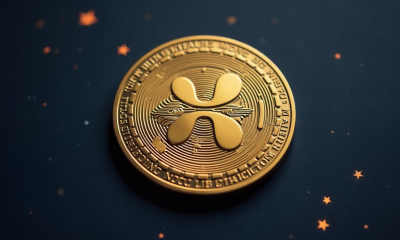
 Cryptocurrency1 week ago
Cryptocurrency1 week agoXRP inflows drop 95% since July spike, while Chaikin data signals possible rally – Crypto News
-
others1 week ago
XRP NIGHT Token Airdrop: Snapshot, Claim Date and What to Expect? – Crypto News
-

 Blockchain1 week ago
Blockchain1 week agoBank of America Sees Interest in Tokenization of Real-World Assets – Crypto News
-

 Blockchain1 week ago
Blockchain1 week agoAltcoin Rally To Commence When These 2 Signals Activate – Details – Crypto News
-
others1 week ago
Breaking: Strategy Files $4.2 Billion STRC Offering To Buy More Bitcoin – Crypto News
-

 Blockchain1 week ago
Blockchain1 week agoSEC Crypto ETFs Ruling Brings Structural Fix, Not Retail Shakeup – Crypto News
-
Business1 week ago
Breaking: Solana ETFs Near Launch as Issuers Update S-1s With Fund Fees – Crypto News
-
Cryptocurrency7 days ago
Cardano’s NIGHT Airdrop to Hit 2.2M XRP Wallets — Find Out How Much You Can Get – Crypto News
-
others1 week ago
Ripple Swell 2025: Top Speakers and Panelists to Watch this November – Crypto News
-

 Technology1 week ago
Technology1 week agoOppo K13 Turbo series confirmed to launch in India with in-built fan technology: Price, specs and everything expected – Crypto News
-
Business1 week ago
Bitpanda Co-Founder & Co-CEO Paul Klanschek Steps Down as Firm Eyes Frankfurt IPO – Crypto News
-

 De-fi1 week ago
De-fi1 week agoWhite House Crypto Report Recommends Expanding CFTC’s Role in Crypto Regulation – Crypto News
-
Technology1 week ago
Coinbase to Offer Tokenized Stocks and Prediction Markets in U.S. – Crypto News
-
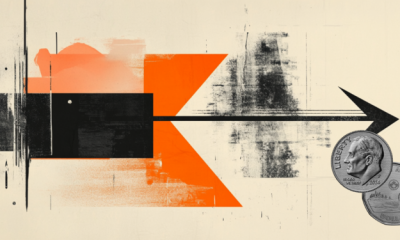
 others1 week ago
others1 week agoCanadian Dollar under pressure amid weak GDP, Trump tariff threat, and strong US data – Crypto News
-
Technology6 days ago
Beyond Billboards: Why Crypto’s Future Depends on Smarter Sports Sponsorships – Crypto News
-

 others1 week ago
others1 week agoGold slides below $3,300 as traders await Fed policy decision – Crypto News
-

 others1 week ago
others1 week agoGold slides below $3,300 as traders await Fed policy decision – Crypto News
-
Business1 week ago
Breaking: SEC Launches “Project Crypto” To Enable Tokenization of U.S. Markets – Crypto News
-
![WBC Elliott Wave analysis and Elliott Wave forecast [Video]](https://dripp.zone/news/wp-content/uploads/2025/01/WBC-Elliott-Wave-analysis-and-Elliott-Wave-forecast-Video-400x240.jpg)
![WBC Elliott Wave analysis and Elliott Wave forecast [Video]](https://dripp.zone/news/wp-content/uploads/2025/01/WBC-Elliott-Wave-analysis-and-Elliott-Wave-forecast-Video-80x80.jpg) others1 week ago
others1 week agoCan the record-breaking rally last? – Crypto News
-
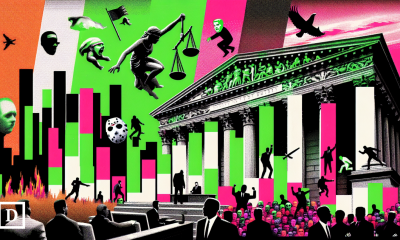
 De-fi1 week ago
De-fi1 week agoCourt Overturns Fraud Conviction of OpenSea’s Nate Chastain – Crypto News
-

 Technology1 week ago
Technology1 week agoBig Tech’s Big Bet on AI Driving $344 Billion in Spend This Year – Crypto News
-
Cryptocurrency1 week ago
CME XRP Futures Hit Record Highs in July Amid ETF Approval Optimism – Crypto News
-
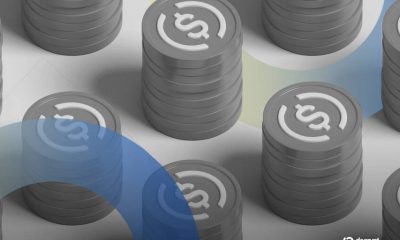
 Cryptocurrency1 week ago
Cryptocurrency1 week agoStablecoins Are Finally Legal—Now Comes the Hard Part – Crypto News
-

 Cryptocurrency7 days ago
Cryptocurrency7 days agoTron Eyes 40% Surge as Whales Pile In – Crypto News
-

 Cryptocurrency7 days ago
Cryptocurrency7 days agoEthereum Hits Major 2025 Year Peak Despite Price Dropping to $3,500 – Crypto News
-
Business5 days ago
Analyst Spots Death Cross on XRP Price as Exchange Inflows Surge – Is A Crash Ahead ? – Crypto News
-

 Technology5 days ago
Technology5 days agoOppo K13 Turbo, K13 Turbo Pro to launch in India on 11 August: Expected price, specs and more – Crypto News
-

 Technology4 days ago
Technology4 days agoOpenAI releases new reasoning-focused open-weight AI models optimised for laptops – Crypto News
-
Business1 week ago
Breaking: CBOE Files For Rule Change To List Crypto ETFs Without SEC Approval – Crypto News
-

 De-fi1 week ago
De-fi1 week agoSamourai Wallet Founders Plead Guilty, Agree to $237 Million Forfeiture – Crypto News
-

 Technology1 week ago
Technology1 week agoSolana DEX volume dips 20% after co-founder slams meme coins – Crypto News
-

 Technology1 week ago
Technology1 week agoTim Cook confirms Apple will ramp up AI spending, ‘open’ to acquisitions – Crypto News
-

 Technology1 week ago
Technology1 week agoOppo K13 Turbo series confirmed to launch in India with in-built fan technology: Price, specs and everything expected – Crypto News
-
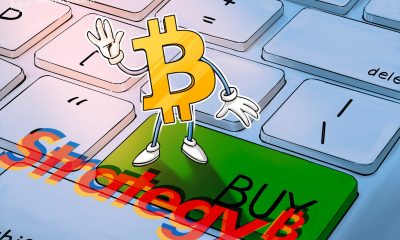
 Blockchain1 week ago
Blockchain1 week agoStrategy Expands STRC Offering Twice in One Week – Crypto News
-
Technology1 week ago
Will The First Spot XRP ETF Launch This Month? SEC Provides Update On Grayscale’s Fund – Crypto News
-

 Technology1 week ago
Technology1 week agoAmazon Great Freedom Sale deals on smartwatches: Up to 70% off on Samsung, Apple and more – Crypto News
-
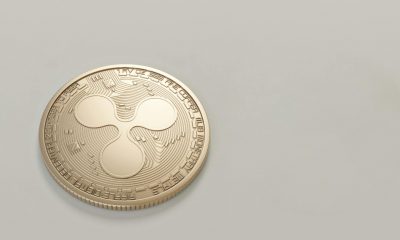
 Blockchain7 days ago
Blockchain7 days agoXRP Must Hold $2.65 Support Or Risk Major Breakdown – Analyst – Crypto News
-

 Blockchain7 days ago
Blockchain7 days agoXRP Must Hold $2.65 Support Or Risk Major Breakdown – Analyst – Crypto News
-
Business6 days ago
Is Quantum Computing A Threat for Bitcoin- Elon Musk Asks Grok – Crypto News
-

 Technology6 days ago
Technology6 days agoElon Musk reveals why AI won’t replace consultants anytime soon—and it’s not what you think – Crypto News
-

 Technology6 days ago
Technology6 days agoGoogle DeepMind CEO Demis Hassabis explains why AI could replace doctors but not nurses – Crypto News
-

 Cryptocurrency5 days ago
Cryptocurrency5 days agoLido Slashes 15% of Staff, Cites Operational Cost Concerns – Crypto News
-

 De-fi4 days ago
De-fi4 days agoTON Sinks 7.6% Despite Verb’s $558M Bid to Build First Public Toncoin Treasury Firm – Crypto News
-
Blockchain4 days ago
Shiba Inu Team Member Reveals ‘Primary Challenge’ And ‘Top Priority’ Amid Market Uncertainty – Crypto News
-

 others4 days ago
others4 days agoBank of America CEO Denies Alleged Debanking Trend, Says Regulators Need To Provide More Clarity To Avoid ‘Second-Guessing’ – Crypto News
-

 Technology1 week ago
Technology1 week agoNintendo Direct Partner showcase highlights third-party titles coming to Switch and Switch 2 – Crypto News
-
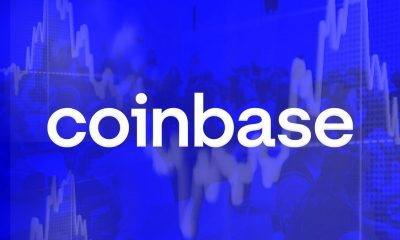
 De-fi1 week ago
De-fi1 week agoCoinbase Unveils ‘Everything Exchange’ Bringing Tokenized Stocks to US Users – Crypto News
-
Business1 week ago
XRP Price Prediction- RLUSD Volumes on Aave Hit ATH As Bulls Eye Rally to $5 – Crypto News

